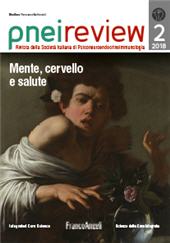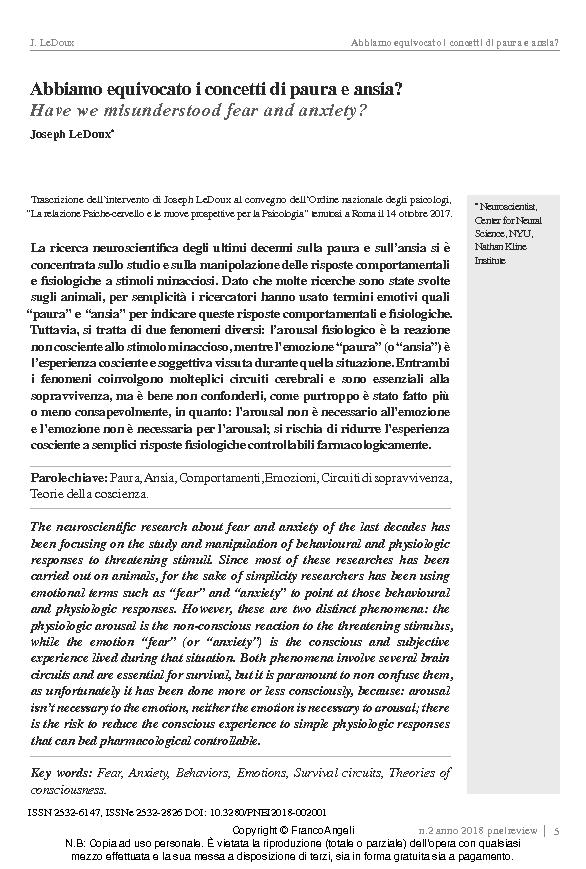Abbiamo equivocato i concetti di paura e ansia?
5-21 p.
La ricerca neuroscientifica degli ultimi decenni sulla paura e sull'ansia si è concentrata sullo studio e sulla manipolazione delle risposte comportamentali e fisiologiche a stimoli minacciosi. Dato che molte ricerche sono state svolte sugli animali, per semplicità i ricercatori hanno usato termini emotivi quali "paura" e "ansia" per indicare queste risposte comportamentali e fisiologiche. Tuttavia, si tratta di due fenomeni diversi: l'arousal fisiologico è la reazione non cosciente allo stimolo minaccioso, mentre l'emozione "paura" (o "ansia") è l'esperienza cosciente e soggettiva vissuta durante quella situazione.
Entrambi i fenomeni coinvolgono molteplici circuiti cerebrali e sono essenziali alla sopravvivenza, ma è bene non confonderli, come purtroppo è stato fatto più o meno consapevolmente, in quanto: l'arousal non è necessario all'emozione e l'emozione non è necessaria per l'arousal; si rischia di ridurre l'esperienza cosciente a semplici risposte fisiologiche controllabili farmacologicamente. [Testo dell'editore].
The neuroscientific research about fear and anxiety of the last decades has been focusing on the study and manipulation of behavioural and physiologic responses to threatening stimuli. Since most of these researches has been carried out on animals, for the sake of simplicity researchers has been using emotional terms such as "fear" and "anxiety" to point at those behavioural and physiologic responses. However, these are two distinct phenomena: the physiologic arousal is the non-conscious reaction to the threatening stimulus, while the emotion "fear" (or "anxiety") is the conscious and subjective experience lived during that situation. Both phenomena involve several brain circuits and are essential for survival, but it is paramount to non confuse them, as unfortunately it has been done more or less consciously, because: arousal isn't necessary to the emotion, neither the emotion is necessary to arousal;
there is the risk to reduce the conscious experience to simple physiologic responses that can bed pharmacological controllable. [Publishers' text].
Forma parte de
PNEI review : rivista della Società Italiana di Psiconeuroendocrinoimmunologia : 2, 2018-
Artículos del mismo número (disponibles individualmente)
-
-
Información
Código DOI: 10.3280/PNEI2018-002001
ISSN: 2532-2826
MATERIAS
KEYWORDS
- Paura, Ansia, Comportamenti, Emozioni, Circuiti di sopravvivenza, Teorie della coscienza
- Fear, Anxiety, Behaviors, Emotions, Survival circuits, Theories of consciousness



